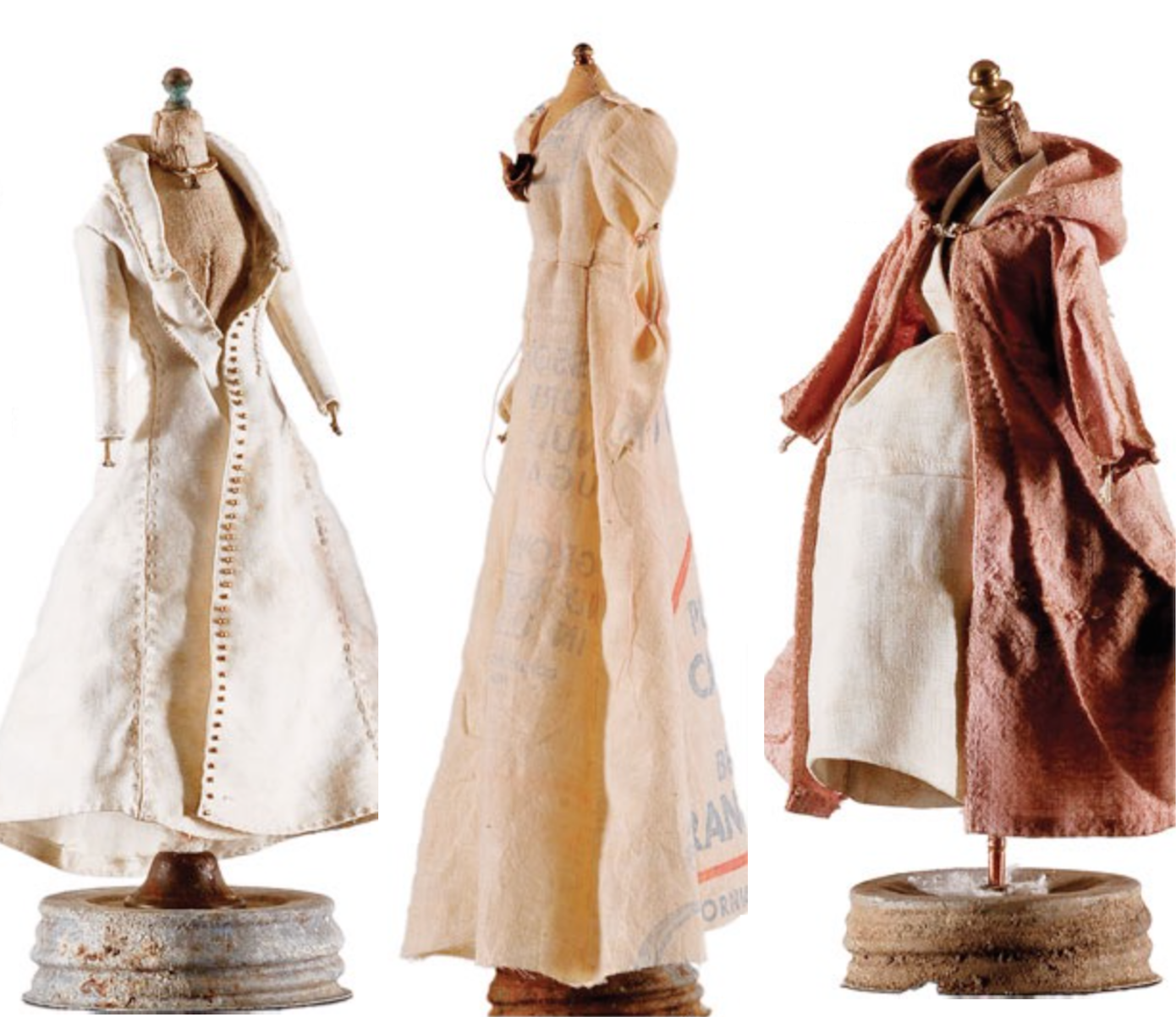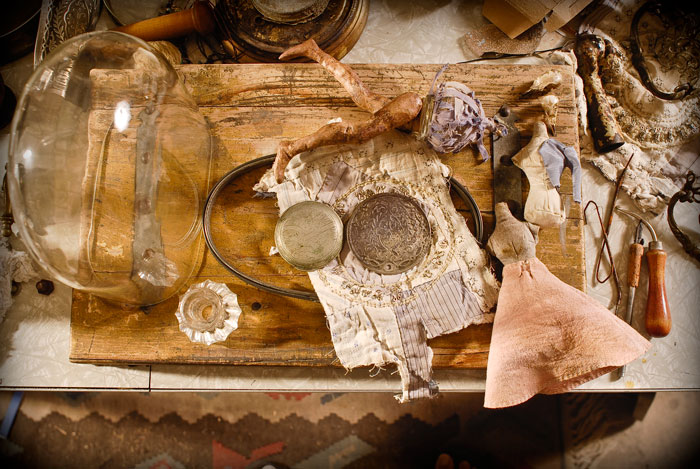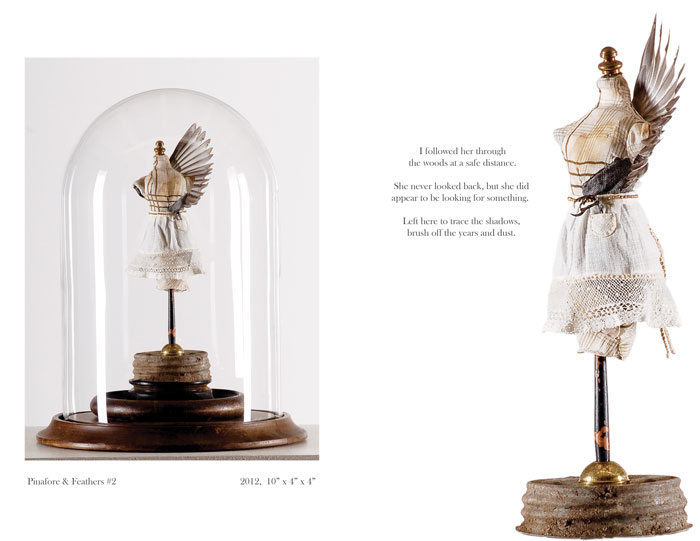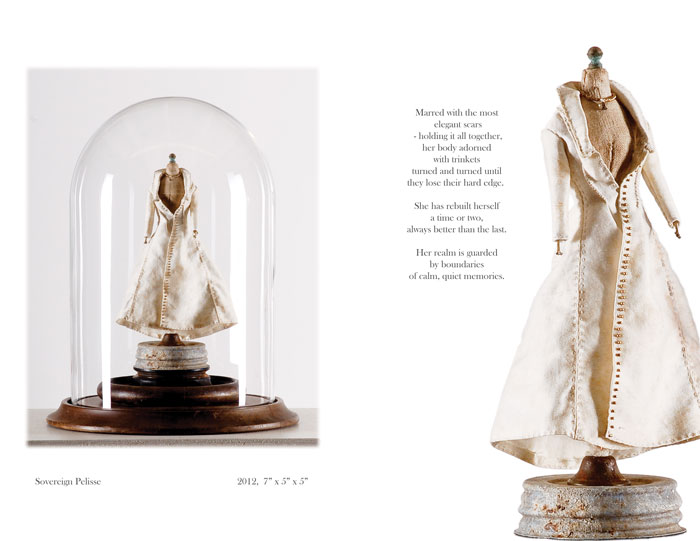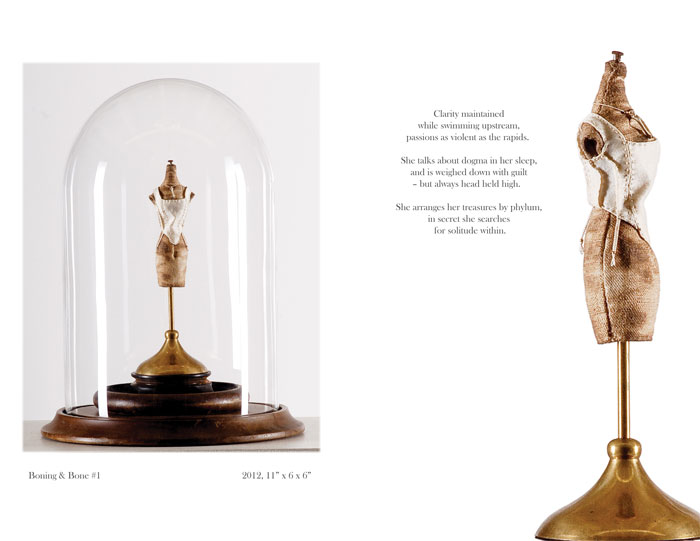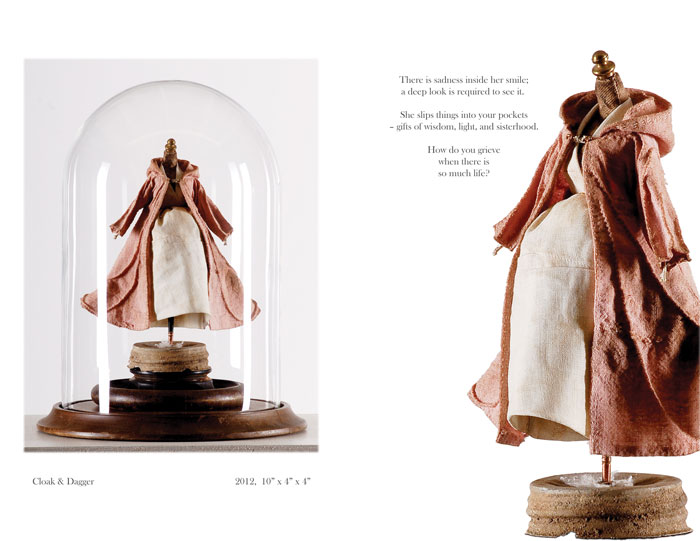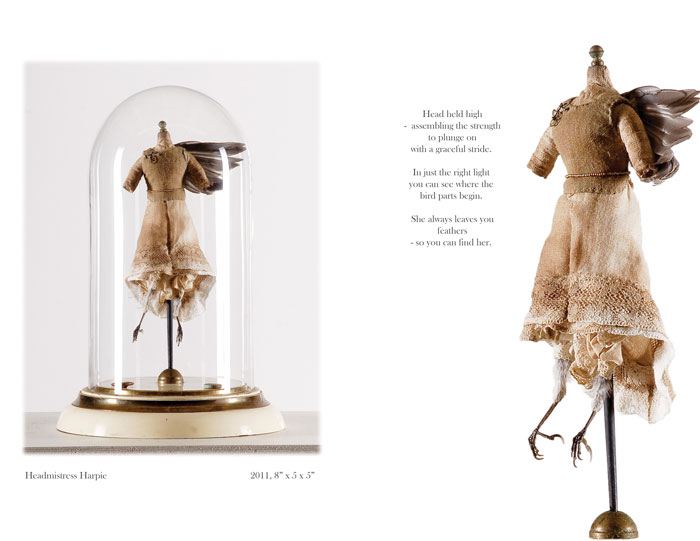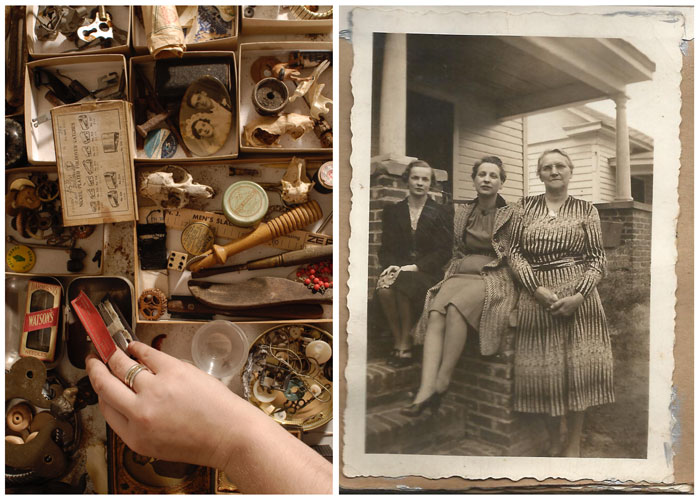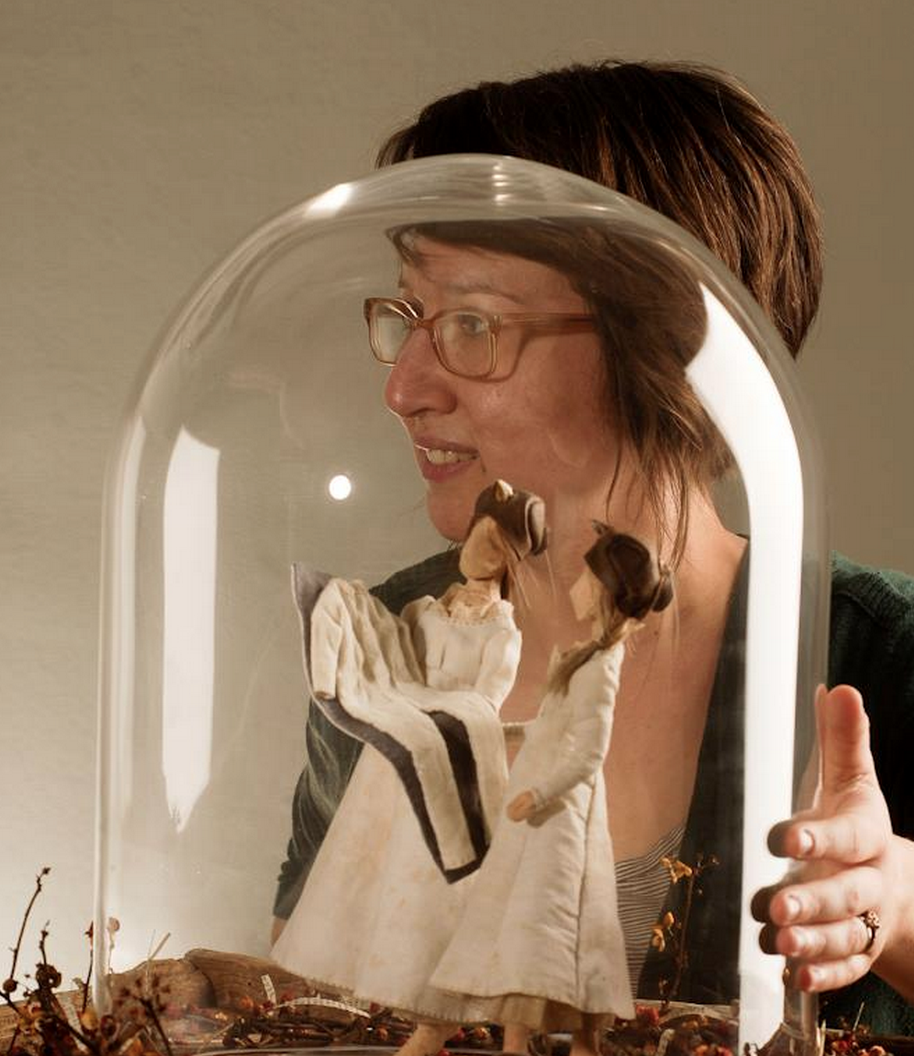Page Turner is a fascinating artist, but hard to describe. ‘Mixed-media’ might be an understatement. Her series A Stitch in Time Saves Nine is full of history, symbolism, spirituality, and Walter Wick-quality components. She and her husband, Zephren, live in rural Virginia.
A Stitch in Time is based on women in your life. Why did you choose each of these women and how do they relate to their totems? I was raised in a devout Mormon family inside a rural Appalachian community during the fourth wave of feminism. My family’s homestead in on what is lovingly referred to as Mormon Mountain. The sisters in my ward were from pioneer families that did not go west to Zion. While I was growing up, I not only served these sisters, but spent time learning the domestic skills and our traditions. I have always been intrigued by their hand, their own dance while snapping beans, or zipping needlepoint. The personal signature each of them had with their skills and their practiced hand. I was equally as intrigued by these sister’s tools. The worn wooden spoon and kitchen towels, delicately stitched or adorned, their sewing notions and everyday objects of personal value. The history and the stories that these sisters shared with me roll around in my head even still. I loved to hear about their lives and their perspectives.
As early as I can remember, I would write about these women in my journals. I made lists character traits of these sisters, very honest observations. I started with these pioneer sisters who ensured my proper upbringing and continued to write my friends, roommates, and other sisters. The genesis of the series comes from my time studying at BYU-I. I came upon a journal from an unknown sister who was part of a handcart company during the Mormon Exodus in search of Zion. As I read her words, I grew to know her and I derived strength from her words and from her drawings. During her turmoil over the death of one of her children and her husband, she finds comfort in the new landscape that inspires her to draw tatting patterns that look like wheat berries. Her world was full of struggle, sadness and doubt; yet she found strength and focus by being creative and not falling completely into one’s suffering. The last entry of her journal was pattern pieces of the gown she intended to make once she reached Zion. I do not know the rest of her story. All those years ago, I copied her pattern pieces into my own journal. At the time I had no intention but to preserve her in my life.
A decade later I came across these pattern pieces and felt compelled to finish her journey and to make her dress. I did not know what the gown would look like, but followed her skilled pattern sketches one stitch at a time (Sugar Sack Gown). From this experience, I recognized the importance of making things and the honor in the domestic skills and traditions as fine art. I had journals filled with lists about the women in my life and felt again compelled to give these sisters life so that they may remain with me. While I was hand stitching this series, I reflected on these sisters and read over my journals to spiritually charge the objects I created. I understand now that I was attempting to figure out my identity as a woman and as a Mormon woman. Each totem in this sculpture series relates to a specific woman in my life, each garment is made to reflect that sister’s personality and relationship with me.
How have you evolved as an artist? I feel that my visual language and vocabulary is ever refining. I am much more decisive about taking objects apart and deconstructing these precious objects. The fear of “messing something up” has nearly vanished. I find that I listen more to my instinct about creating.
You and your husband are both artists. Art has always been a major component to our 15 year relationship. Since we were teenagers, we have been encouraging and supporting each other. Zephren and I are both fine artists, we each make our own work, and also collaborate on projects through our business, Page Turner Studios. We talk all the time about what we are working on, so there is definitely some cross pollination that occurs. Zephren is my favorite person to work with. We get stuff done. For the last two years we have been building our house on the mountain. While digging out part of the hillside for our foundation, it really made me happy to literally be carving out our home with him. We live simply so that we may have the time to make our work. The pursuit of happiness takes us both to the same place.
It seems that you are so attached to even the materials used in your sculptures, is it hard for you to consider selling the items? The way these materials find me, my work finds their owners. My patrons connect so deeply to my work that each piece finds the right owner. The custodial duty to these precious materials transfers. For me, the action of giving these objects new life is quite freeing.
All images copyright Page Turner.
